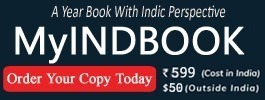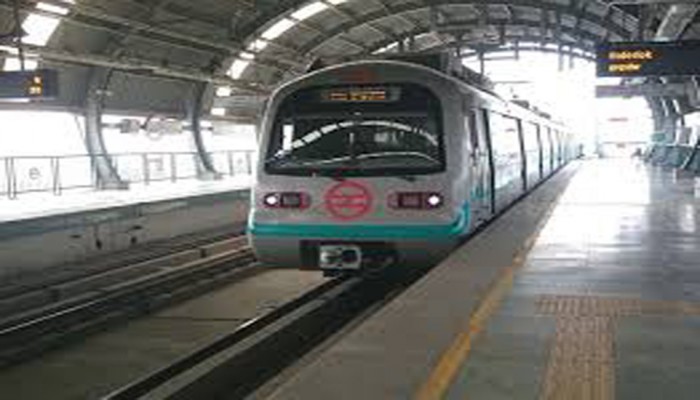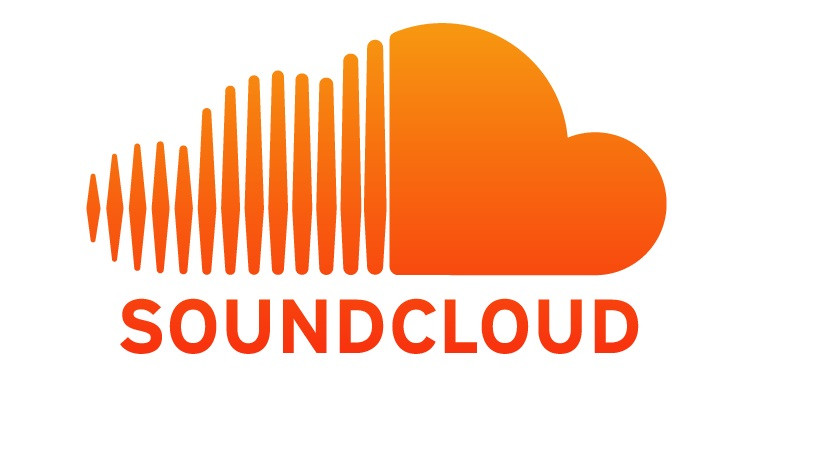The contrasting choices of metro and suburban rail – Part III
- In Current Affairs
- 11:34 AM, Oct 27, 2017
- Prathap Krishnan
In parts I and II of this article, the ridership statistics, the losses incurred and the construction costs of the metro and suburban rail systems across the country were discussed. In this part, we shall discuss the fares of these two systems, one of the principal drivers and perhaps the most decisive in determining the success or failure of public rail transportation. The cost of utilizing other forms of transport like buses or own vehicles too shall be examined.
Let us look at the fare structure of the suburban system first. Presently, the ticket fares for a single journey are common for the various suburban zones in the country – Rs 5 for a distance of 0-20kms, Rs 10 for a distance of 21-45kms and Rs 15 for a distance of 46-70kms [1]. Since, metro lines do not extend beyond these distances, it makes sense to limit the comparison to these distances (as mentioned in part-I, the pink line of the Delhi metro under construction, a line length of 60km is the longest at this time not just in Delhi but the country as well). The ridership of the suburban rail was extensively discussed in part-I and in general they are very popular, although the word is a massive understatement in cases like Bombay.
The Delhi metro till April, 2017 had a 15 slab fare structure with a minimum fare of Rs 8 for a distance of 0-2kms progressively increasing to Rs 30 for a distance of greater than 44kms [2]. For a middling distance of 15-30kms, the fares are Rs 19, 21, 22, 23, 25 in stages of 3kms [2]. One can recall, from part-I, that the Delhi metro recorded a ridership of around 2.76 million per day. On the 10th of May, 2017, the fares for the Delhi metro were revised, on recommendation by the fourth Fare Fixation Committee set up by the Government of India in May, 2016 [2]. The 15 slab structure was replaced by a six slab structure and along with it the fares were increased. A fare hike also accompanied this change. The minimum was changed to Rs 10 for 0-2 kms increasing to a maximum of Rs 50, up from Rs 8 and 30 respectively. The distance for levying the maximum fare was also fixed at greater than 32km, down from the earlier 44km [2].
The fare increase has apparently had a direct impact on ridership as it has dropped from 2.75 million in April, 2017 to 2.57 million in June, 2017 [3] in the six lines operating with this fare structure. The DMRC (Delhi Metro Rail Corporation), however is seemingly unconcerned by this drop, going ahead with the second phase of fare increase, the minimum staying at Rs 10 for 0-2km and the subsequent stages increasing to a maximum of Rs 60 for distances greater than 32km [2]. The DMRC claims this hike is necessary to meet growing input costs and to provide world class service [4]. It remains to be seen how this fare hike affects ridership.
At this point it is useful to take a look at the bus fare structure in the city. The DTC (Delhi Transport Corporation) operates ordinary and air-conditioned services with express services also plying for both. The former has a fare structure of Rs 5 for 0-4kms, Rs 10 for 4-10kms and Rs 15 for above 10kms while the air-conditioned services has a fare structure of Rs 10, 15 and 20 in 4km stages up to 12km and Rs 25 for above 12km [5]. The express services are charged a flat Rs 20 for ordinary buses and Rs 30 for air-conditioned ones [5]. It is interesting to note that while the ordinary services were always cheaper than the metro, the fares of the air-conditioned services were similar to the metro for say a 20km distance before the metro hiked its fare in May. With the metro effecting two hikes in the space of five months, the buses, air-conditioned or otherwise, now have a significant advantage over the metro in terms of fares. There appears to be an opportunity for the DTC to introduce services which mirror the metro routes and increase frequencies where they already exist to attract the crowd which is looking for alternatives. Time will tell if the DTC capitalises on this opportunity.
Let us now shift focus to Bombay. The 11.4km line is operated by the MMOPL (Mumbai Metro One Private Limited) of which 69% is held by R Infra, another 26% by MMRDA (Mumbai Metropolitan Regional Development Authority) and 5% by Veolia Transport RATP Asia, France [6], the first metro in the country awarded through the PPP (Public-Private-Partnership) route. The metro currently offers a discounted rate for customers, courtesy a High Court stay order [7] – a minimum of Rs 10 increasing to Rs 40 in steps of Rs 10 [8]. Considering the total length of the line is less than 12km, even the discounted fare is higher than the current DMRC fare structure. The actual proposed fare structure [8] is a minimum of Rs 10 increasing to a maximum of Rs 110!
Now, as was discussed in part-I, the ridership of the MMOPL of 3.55 lakhs is falling short of the target of 5.13 lakhs per day and the company has made losses of around 280 crores in the financial years 2014-15 and 2015-16. If the discount to the fares were removed, one wonders how the ridership will be affected and its revenues. It is of course true that the metro will make more money by charging Rs 110 to two people as opposed to Rs 40 to five people and therefore, it may not matter if the ridership drops by say, a third. However, the question of whether the metro serves as the public transport that it is intended to do will arise in such an event assuming the Bombay High Court decides in their favour. At this point, it serves well to remind ourselves that the suburban rail option for the same distance costs a mere Rs 5.
The BEST (Bombay Electric Supply and Transport) Undertaking in the city offers four different bus services – ordinary, limited, express and air-conditioned [9]. For the purposes of this article, we shall consider the extremes – the ordinary and the air-conditioned. The minimum for the two services are Rs 8 and 15 respectively, while for a distance of 10-12km (the length of the metro line) it is Rs 20 and 40 respectively. It can be seen that while the air-conditioned services line up with the currently discounted metro fares, the ordinary fares are much cheaper. It should also be noted that the suburban rail is still the cheapest option available. It is, therefore, not difficult to see why the suburban trains literally run jam packed. In fact, that the metro sees the kind of ridership that it does despite its fare structure could well be a testament to the city’s penchant to use public transportation.
Let us now shift focus to Bangalore. The plan to build a full-fledged suburban network in the city has been long pending as discussed in part-II. The metro which currently operates two lines has a fare structure which is very similar to that of the current one in Delhi – a minimum of Rs 10 and a maximum of Rs 60, although there are 18 slabs compared to six in Delhi [10]. The current ridership of 3 lakhs (discussed in part-I), is seen as encouraging for the metro. The BMTC (Bangalore Metropolitan Transport Corporation) operates ordinary and air-conditioned services with minimum fares of Rs 5 [11] and Rs 15 [12] respectively for the first two kilometres. For a distance of 24km, for which the metro charges Rs 60 [10], the BMTC charges Rs 24 and 50 for ordinary and air-conditioned services [11], [12]. Again, it can be seen that the fares of the metro roughly lines up with that of the air-conditioned services while the ordinary services are much cheaper. However, there is a possibility that people are faced with the choice of using the metro or face the unpredictability of the city’s infamous traffic woes, which may explain the relative success of the metro. That the city does not boast of robust suburban services should also be kept in mind.
The story is slightly different in Jaipur. The metro fares are cheaper than its counterparts in Bangalore and Delhi – its 9.6km line operates with three slabs of Rs 6, 11 and 17 [13]. The JCTSL (Jaipur City Transport Services Limited) operates low floor buses with a minimum fare structure of Rs 7 for 0-2km and Rs 14 for 8-12km for non-air-conditioned services and Rs 10 for 0-4km and Rs 15 for 8-12km for its air-conditioned services [14]. However, the ridership of the Jaipur metro remains well below expectations and showing a downward trend as discussed in part-I. There could be other factors involved and it seems prudent to wait for the metro to complete its expansion to check if the performance stays the same. Fare increases to both the metro and buses will naturally have to be monitored during the exercise. At Rs 5, the suburban clearly wins the fare battle. However, Jaipur does not have a network, yet.
Now let us examine Calcutta which houses the cheapest Metro in the country and also the only metro which is managed by the Indian Railways. The metro operates with a minimum of Rs 5 for a distance of 0-5km, increasing in steps of Rs 5 for every subsequent 5km stage, the maximum being Rs 25 for a distance of 25-30km [15]. As discussed in part-I, its ridership is an impressive 5.4 lakhs per day for its 27km line and is second only to Delhi. That the network length and the number of services in Delhi are nearly ten times and the ridership only around four and a half times that of Calcutta should be taken into account.
The private buses in Calcutta for which the fares are regulated by the Government of West Bengal operate with a minimum of Rs 6 for a distance of 0-4km and charges Rs 11 for a distance of 20-24km [16],[17]. Interestingly, it can be seen that, the metro fare for around a 20km distance is roughly double that of the bus fare and similar to other cities (in some cases the ratio is higher) barring Jaipur which has the closest gap between its bus and metro fares. It is therefore, possible that the success in ridership of the metro in Calcutta can potentially be attributed to the absolute fare being relatively more affordable. The suburban system, the cheapest public transportation around in Calcutta at Rs 5 for the first 20km is also by far the biggest in the country in terms of network with its ridership second only to Bombay (discussed in part-I).
Let us now turn our attention to Madras. The CMRL (Chennai Metro Rail Limited) which initially prepared its ticket fare structure based on the Delhi Metro for its project brief published in 2008 - a minimum of Rs 8 increasing to a maximum of Rs 23 [18] did not stick with its plan. At the time of its launch in 2015, it was the costliest metro in the country! The minimum of Rs 10 to a maximum of Rs 40 for its initial 10km line [19], increased to Rs 60 [20] once other sections where inaugurated. In fact, the CMRL has pioneered in setting the fares as other new metro systems like Cochin and Lucknow have adopted the same fare structure [21],[22]. Ironically, even the Delhi metro which initially served as the reference for CMRL has now raised its fares to match CMRL and claimed its fares are on par with other metros [4]. However, not about to relinquish its throne as the costliest metro in the country, there is a possibility the maximum fare of the CMRL could go up to Rs 70, once the phase-I is complete [23].
At the other end of the scale are the MTC (Metropolitan Transport Corporation) bus services. With a minimum charge of Rs 3 for its ordinary services [24], the MTC is the only case discussed in this article with a minimum fare that is cheaper than even the suburban rail! In fact, even for distances of 21-45km, the MTC gives the suburban rail a run for its money, charging between Rs 8 and Rs 12 [24] as compared to Rs 10 for the suburban [1]. Perhaps this could be one reason why the ridership of the suburban is a lot lower than its counterparts in Bombay and Calcutta. The MTC runs ordinary, express, deluxe and air-conditioned services, although the writer has seldom seen the air-conditioned services on the roads in the recent past. The express and the deluxe bus fares are charged one and a half times and two times that of the ordinary fare, while the air-conditioned services are charged two and a half times the deluxe fares with a minimum of Rs 15 [24]. Therefore, for a distance of 20km, the fare for the air-conditioned service works out to Rs 40. The metro of course, charges Rs 60 for this distance while the suburban charges Rs 5 or 10 depending on which side of the 20km mark one travels.
Let us now take a look at personal transport as every time a metro is inaugurated one can read how many vehicles it will take off the road. A look at the top 10 motorbikes in terms of mileage reveals at least a claimed mileage of 80km/litre [25], while in scooters this is around 50 km/litre [26]. Even assuming the actual mileage is half of what is claimed, one can travel at least a distance of around 20-25km on a litre of petrol which was hovering around the Rs 70 mark at the time of writing this article. This cost compares quite well with the metro fares. Couple this with the fact that two wheelers will offer end to end transportation unlike trains which inherently cannot and people deciding on a mode of transportation are more than likely to decide in favour of personal two-wheeler transportation. Therefore, it appears the metro not only loses out to suburban rail and buses, it is not likely to take any vehicles off the road either. Ridership statistics (discussed in part-I) for various cities with expensive fares support this argument.
During the floods in December, 2015 in Madras, the metro with an advantage of an elevated track remained operational (as did the suburban MRTS) with road transport getting affected. The ridership of the metro which was hovering around the 10,000 mark before the floods rose spectacularly even crossing the 1 lakh per day mark [27]. Such an event should have shifted the public permanently towards using the metro. This however, was not the case. After three months of seeing a ridership of 12,000, it petered back down to pre-flood levels of 10,000 [27]. This is clear evidence that the public were not willing to shell out the money needed for the costly metro rides. This is also why the proposed transfer of the MRTS suburban to the CMRL [28] could be a disaster for commuters who will have to pay six times to get from one end of the line to another! Additionally, the Southern Railways which currently offers cross sectorial services to and from Velachery to destinations on other suburban lines such as Gummidipundi and Arakkonam, will automatically be discontinued if tracks and trains shift from EMU to metro. This means, commuters not only have to pay significantly more, they will lose not less than 15-20 minutes to switch lines. How exactly, is this move people friendly is anybody’s guess.
Governments (Central and States) seem to have lost sight of one basic principle. For people to switch to public transport or even continue using them (especially rail transport), they have to be not only affordable, they have to be outright cheap. The onus to ensure this is even greater on the Central government since they are a stakeholder of every rail project in the country, unlike State Governments which have to worry about only their own. Any Government which cares about the environment will ensure public transport remains cheap and if necessary subsidised and supported. The suburban rail checks all the boxes in this regard and ridership statistics show people are willing to use it in large numbers. Given all that has been discussed over the three parts of this article, there can be no doubt that the suburban rail is the queen of public transportation. The metro on the other hand, is the glamorous pretender. Governments would do well to re-consider this reckless push to build metro systems all over the country and look at building suburban rail systems instead i.e, trade plush and swanky for functional and well-maintained.
REFERENCES:
- Revised Second Ordinary (Suburban) Fare Table http://www.indianrailways.gov.in/railwayboard/uploads/directorate/traffic_comm/Freight_Rate_2K14/Rev-2nd-ordy-Suburban_240614.pdf , 24 June 2014, Accessed on 25 September 2017, Ministry of Railways, Government of India
- Highlights of fare revision of Delhi metro http://www.delhimetrorail.com/press_reldetails.aspx?id=jkOjxn1IG6Ylld , DMRC Press Release, 08 May 2017, Accessed on 25 September 2017, Delhi Metro Rail Corporation Limited
- Line-wise total ridership http://www.delhimetrorail.com/press_reldetails.aspx?id=yhM5zoy2hw4lld , DMRC Press Release, 28 August 2017, Accessed on 25 September 2017, Delhi Metro Rail Corporation Limited
- Delhi metro fares at par with other metros, hike necessary to meet input costs and to keep providing world class service http://www.delhimetrorail.com/press_reldetails.aspx?id=Q95RIaPRwkclld DMRC Press Release, 30 September 2017, Accessed on 30 September 2017, Delhi Metro Rail Corporation Limited
- Our Services, Fare Stages and Fare Charts http://www.delhi.gov.in/wps/wcm/connect/DOIT_DTC/dtc/home , Accessed on 25 September 2017, Delhi Transport Corporation
- Overview, Mumbai Metro One Private Limited http://www.reliancemumbaimetro.com/overview.html#tab-1 , Accessed on 28 September 2017, Reliance Metro
- Mumbai metro fare hike: SC refuses to interfere with HC order http://indianexpress.com/article/cities/mumbai/mumbai-metro-fare-hike-sc-refuses-to-interfere-with-hc-order/ , PTI, 27 January 2016, Accessed on 30 September 2017, The Indian Express
- Fares, Mumbai Metro One Private Limited http://www.reliancemumbaimetro.com/fares.html# , Accessed on 28 September 2017, Reliance Metro
- Rates of Regular Tickets, Daily Bus Pass and Periodical Bus-passes with effect from 1st July 2016 http://bestundertaking.com/pdf/farerevisionjuly2016-english.pdf , Accessed on 01 October 2017, BEST Undertaking
- Fare Calculator http://fare.bmrc.co.in/ , Accessed on 01 October 2017, Bangalore Metro Rail Corporation Limited
- General Service Fares https://www.mybmtc.com/en/general-service , Accessed on 03 October 2017, Bangalore Metropolitan Transport Corporation
- A/C Service Fares https://www.mybmtc.com/en/ac-service Accessed on 03 October 2017, Bangalore Metropolitan Transport Corporation
- Jaipur Metro Fare Matrix table w.e.f 01 April 2017 http://transport.rajasthan.gov.in/content/transportportal/en/metro/PassengerInformation/MetroFares.html , Accessed on 03 October 2017, Jaipur Metro Rail Corporation Limited, Transport Department Of Rajasthan
- Low Floor Buses Fare Chart http://www.transport.rajasthan.gov.in/content/dam/transport/jaipurbus/image/Fare%20Chart.pdf , Accessed on 03 October 2017, Jaipur City Transport Services Limited
- Revised fare structure of Metro Railway, Lolkata w.e.f 07.11.2013 http://www.mtp.indianrailways.gov.in/view_section.jsp?lang=0&id=0,2,396 , Last Updated on 21 April 2016, Accessed on 04 October 2017, Ministry of Railways, Government of India
- A complete list of new bus and taxi fares in Kolkata after hike in petrol price http://www.bengalspider.com/resources/6203-A-complete-list-new-bus-taxi-fares-Kolkata.aspx , 12 November 2012, Accessed on 04 October 2017, SpiderWorks Technologies
- Bus fare in Bengal to be hiked by Re. 1 per stagehttp://www.thehindu.com/news/cities/kolkata/bus-fare-in-bengal-to-be-hiked-by-re-1-per-stage/article6352810.ece , Staff Reporter, 26 August 2014, Accessed on 04 October 2017, The Hindu
- Project Brief, CRML August 2008 http://ta.chennaimetrorail.org/wp-content/uploads/sites/2/2015/11/project_brief_updated_aug081.pdf , Accessed on 06 October 2017, Chennai Metro Rail Limited
- The costliest Metro in the country http://www.thehindu.com/news/cities/chennai/chennai-metro-is-the-costliest-in-india/article7370018.ece , T.K.Rohit, 30 June 2015, Accessed on 06 October 2017, The Hindu
- Fare Table, CMRL http://chennaimetrorail.org/wp-content/uploads/2017/05/Fare-table.pdf , Accessed on 06 October 2017, Chennai Metro Rail Limited
- Minimum fare of Kochi Metro fixed at Rs. 10; maximum is Rs. 60Rates suggested by IIM, based on ridership projection in DPR http://www.thehindu.com/news/cities/Kochi/Minimum-fare-of-Kochi-Metro-fixed-at-Rs.-10-maximum-is-Rs.-60Rates-suggested-by-IIM-based-on-ridership-projection-in-DPR/article16731451.ece , John.L.Paul, 30 November 2016, Accessed on 7 October 2017, The Hindu
- Lucknow Metro fares to vary between Rs10 to Rs60 http://www.hindustantimes.com/lucknow/lucknow-metro-fares-to-vary-between-10-to-60/story-9jDRrsmfaeMkEbNfTNqyBI.html , Anupam Srivastava, 24 August 2017, Accessed on 7 October 2017, The Hindustan Times
- Chennai Metro ride likely to be costliest in country http://www.thehindu.com/news/national/tamil-nadu/chennai-metro-ride-likely-to-be-costliest-in-country/article17784418.ece , Sunitha Sekhar, 4 April 2017, Accessed on 8 October 2017, The Hindu
- MTC Bus, Fare list, Bus Fares http://www.mtcbus.org/ , Accessed on 8 October 2017, Metropolitan Transport Corporation Limited
- Best Mileage Bikes in India https://www.bikewale.com/best-mileage-bikes-in-india/ , Accessed on 9 October 2017, BikeWale India
- Best Scooters in India https://www.bikewale.com/best-scooters-in-india/ , Accessed on 9 October 2017, BikeWale India
- Chennai Metro Rail sees fall in passenger footfall http://www.thehindu.com/news/cities/chennai/chennai-metro-rail-sees-fall-in-passenger-footfall/article8482080.ece , Sunitha Sekhar, 16 April 2016, Accessed on 9 October 2017, The Hindu
- Chennai Metro-MRTS merger report in six months http://www.thehindu.com/todays-paper/tp-national/tp-tamilnadu/report-on-merger-of-metro-rail-mrts-in-six-months/article18596779.ece , Staff Reporter, 29 May 2017, Accessed on 9 October 2017, The Hindu







Comments